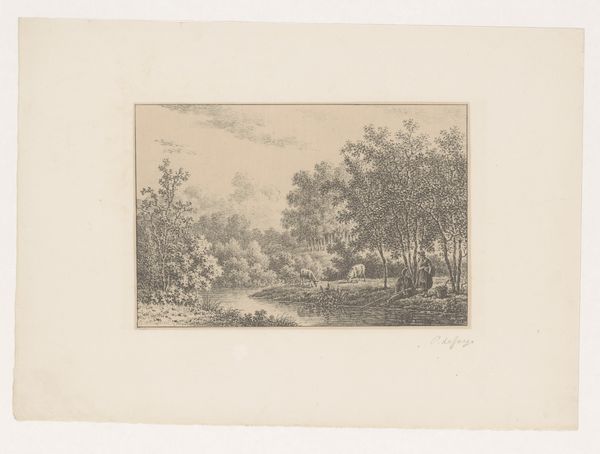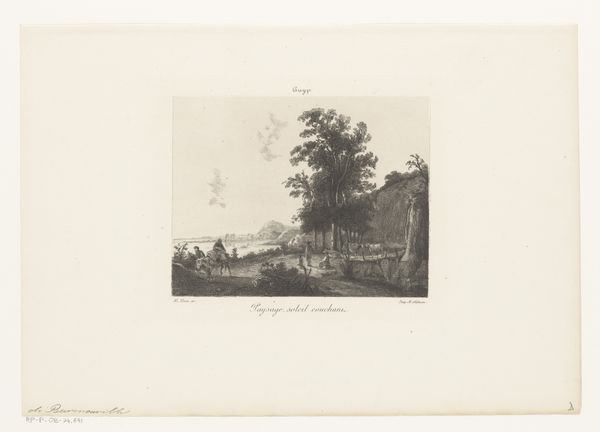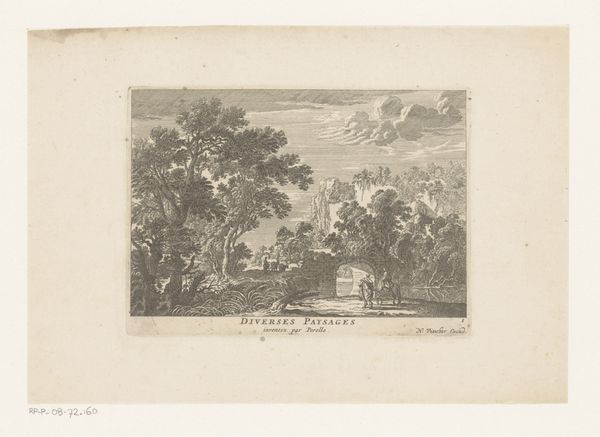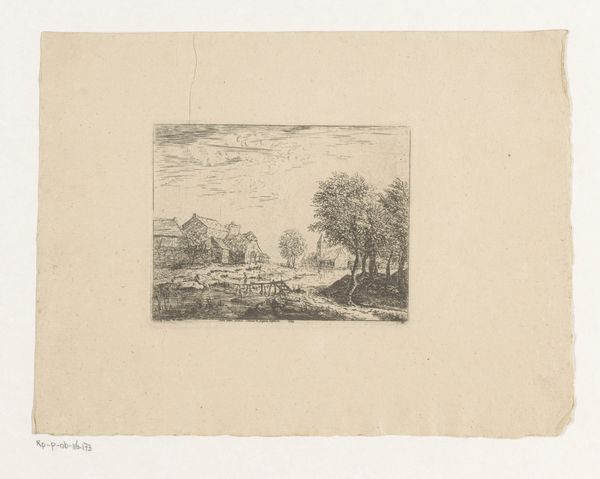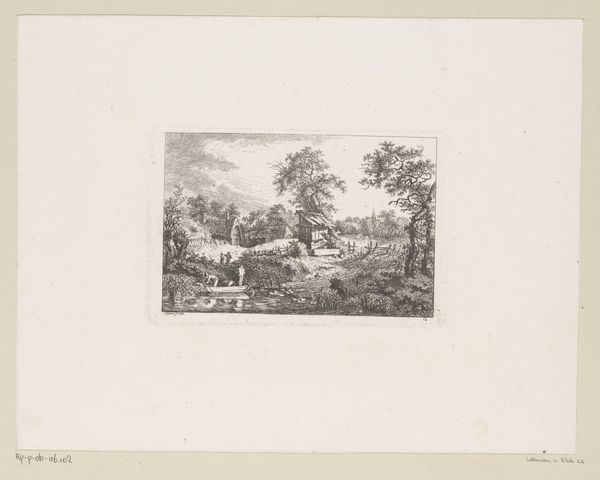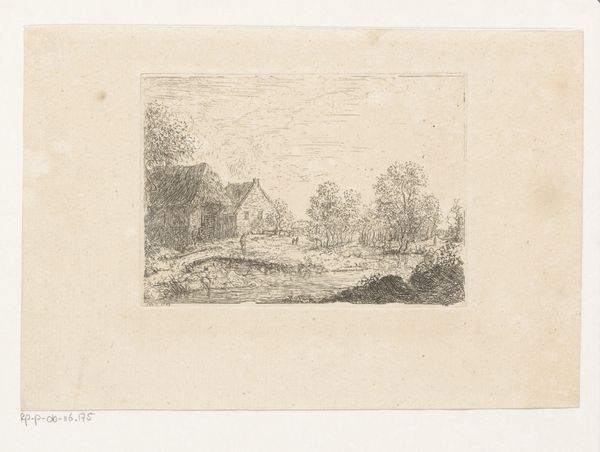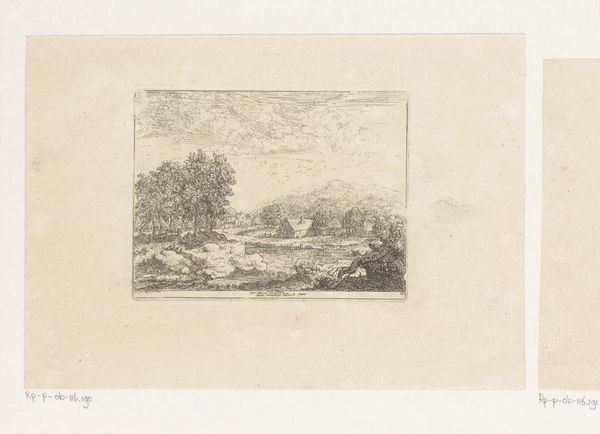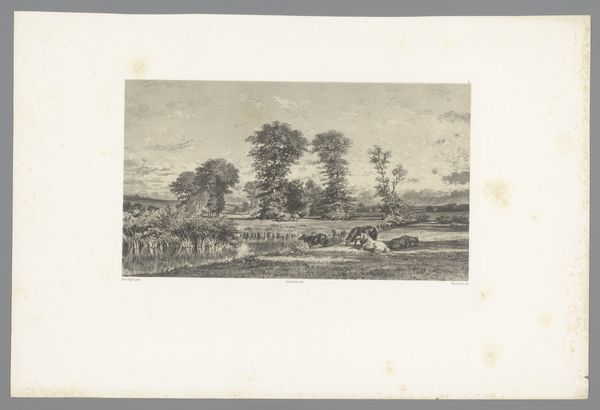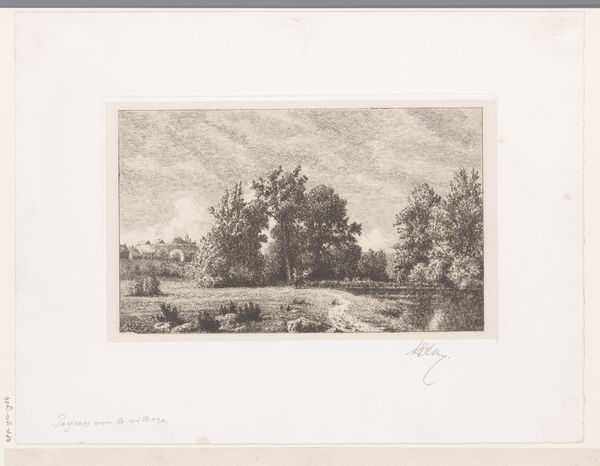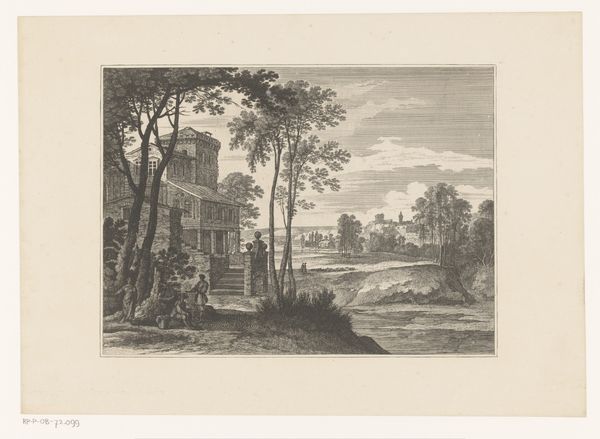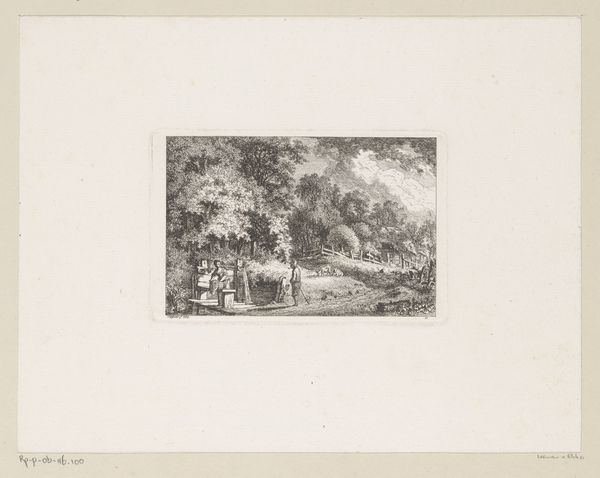
drawing, print, engraving
#
pencil drawn
#
drawing
#
neoclacissism
# print
#
pencil sketch
#
landscape
#
15_18th-century
#
engraving
Dimensions: height 146 mm, width 180 mm
Copyright: Rijks Museum: Open Domain
Curator: This delicate print, created in 1771 by B.A. Wieilh, is titled "Wooden Bridge over a River". It seems to capture a serene moment. What's your initial take on it? Editor: I’m immediately struck by its fragility. The texture is very delicate. It also feels inherently artificial – there's a carefully constructed naturalism on display, more an idealised version of nature. Curator: It's interesting that you pick up on the artificiality. The late 18th century was a period heavily invested in rationalising and categorising the world, which would have inevitably impacted the way landscape was represented. Editor: Precisely. This piece uses engraving, right? Think of the skilled labour involved in manually creating these lines on a plate and consider the intended consumption. Prints like this democratized art in a sense but also aesthetic ideals propagated by the elite. Curator: Absolutely. It's from a time when printmaking became an industry, allowing wider audiences to experience art, even though the art selected mirrored upper class tastes. The image likely reflects the societal interest in landscape, gardens, and the picturesque in particular. Editor: And how this taste then influences actual construction – what kinds of bridges were built? The materials they used? Engravings were functional artifacts shaping what the world thought was beautiful, therefore worthy to produce. Curator: Good point! The work reveals a Neoclassical desire for order even within an apparently natural setting. One could trace the print's circulation through the networks of its time. How it impacted or even perpetuated social and aesthetic structures... Editor: Which reminds me, what type of workshops printed it and were women able to partake in this labour or even be represented? Perhaps understanding the cultural landscape surrounding its production may illuminate it. Curator: Yes, knowing how such landscapes circulated via print culture opens discussions about whose perspective is prioritized and how that has lasting power in influencing even further generations about idyllic countryside life. Editor: I find myself looking at what kind of building is off to the side – it really is the product of multiple human processes. It almost encourages a new type of gaze into the means of landscape production. Curator: Indeed! What first appeared serene has become an incredibly potent reminder of art's place within society. Editor: Absolutely, seeing past the calm exterior into the social underpinnings truly transforms our perspective.
Comments
No comments
Be the first to comment and join the conversation on the ultimate creative platform.
